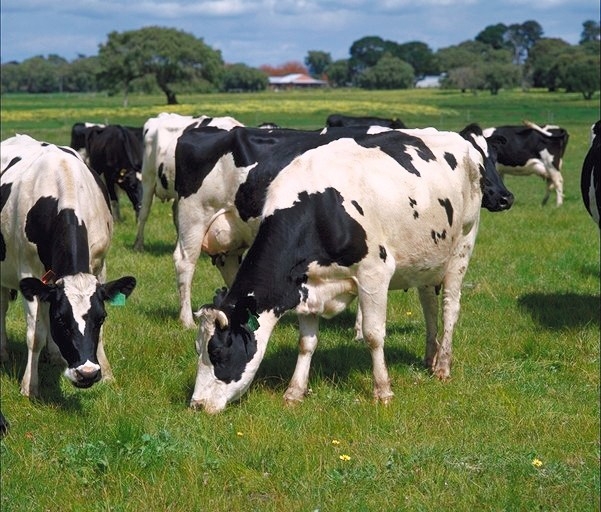
NZ's livestock farmers may be able to cash in on new research into potential health benefits of meat and milk from grass-fed animals, Federated Farmers says.
Cows fed on fresh grass produce milk with five times as much unsaturated fat as cows fed on grain, said Dairy chairman, Lachlan McKenzie.
"Lab-based research suggests these unsaturated fats, known as conjugated linoleic acid (CLA), protect the heart and actually aid weight loss," he said.
"It's also great news for our beef farmers as grass-fed beef also contains higher concentrations of CLA's".
McKenzie was commenting on a new study from Harvard University's school of public health which found that milk from grass-fed cows may be healthier than milk from cows raised on feedlots - a common practice in affluent nations in the northern hemisphere reports Stuff.
Earlier studies in animals have suggested that CLAs can protect the heart, and help in weight loss, and two big dietary supplement companies have won regulatory approval in Europe and the United States to sell CLA ingredients in foods for people wanting to lose weight.
Hannia Campos of the Harvard School of Public Health in Boston and her colleagues found, in a study of 4000 people, that people with the highest concentrations of CLAs - the top fifth among all participants - had a 36 percent lower risk of heart attack compared to those with the lowest concentrations.
Those findings held true even once the researchers took into account heart disease risk factors such as high blood pressure and smoking, Reuters reported.
These heart-healthy benefits could more than offset the harms of saturated fat in milk, Dr Campos said.
"Because pasture grazing leads to higher CLA in milk, and it is the natural feed for cattle, it seems like more emphasis should be given to this type of feeding," she said.
The study was carried out in Costa Rica where dairy cows are grazed on pasture, similar to New Zealand and Australia.
They identified nearly 2000 Costa Ricans who had suffered a non-fatal heart attack, and another 2000 who had not. Then they measured the amount of CLA in fat tissues to estimate each person's intake, the researchers reported in the American Journal of Clinical Nutrition.
The lower risk attributed to CLA when this was taken into account was to 49 percent.
We welcome your comments below. If you are not already registered, please register to comment.
Remember we welcome robust, respectful and insightful debate. We don't welcome abusive or defamatory comments and will de-register those repeatedly making such comments. Our current comment policy is here.